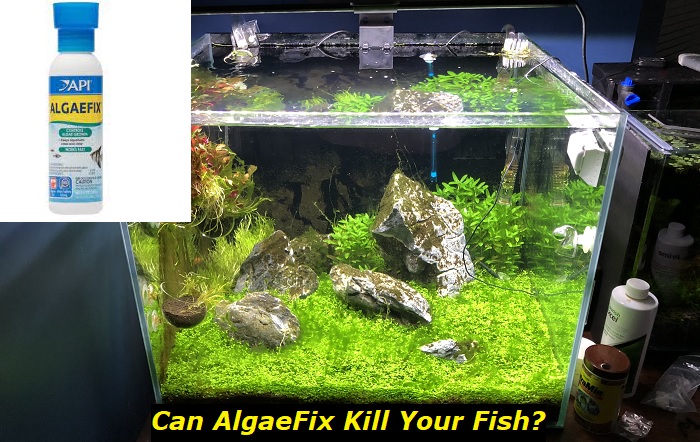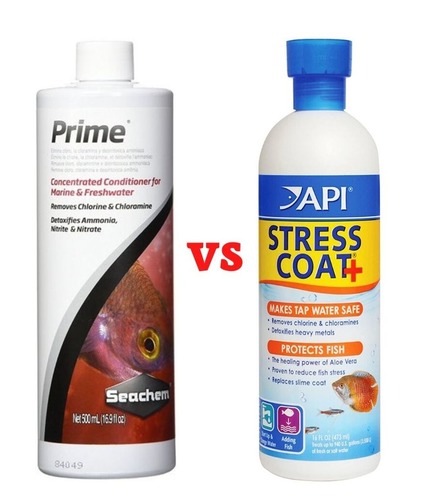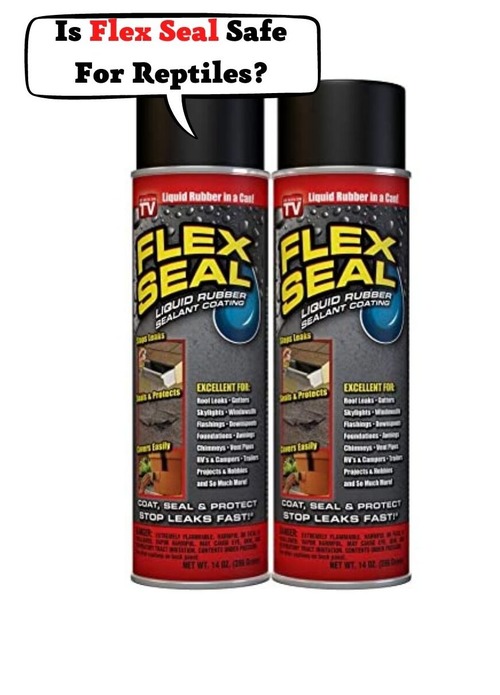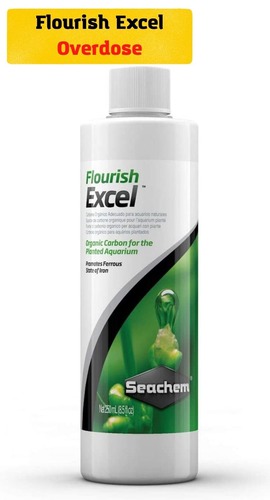Algaefix is a chemical solution for getting rid of algae in your aquarium. However, many bad comments trail the product on many eCommerce shopping websites, as many users report that the product killed their fish.
While there are many reasons for this possibility, one of the questions many responsible pet owners are always quick to ask is, “What have I done wrong?”

This article discusses some common mistakes that fish owners make when using Algaefix and how you can avoid the same mistakes. Read on to find out.
What Is Algaefix?
API Algaefix is an aquarium algaecide. This product is available for freshwater and marine aquariums.
The marine Algaefix controls algae growth and bloom in reef aquariums. It controls red slime and green and brown algae in reed aquariums.
The product is safe for the biodiversity in your reef tank. It is safe for your live corals, invertebrates, and fish if you use the recommended dosage. The recommended dosage is 1 teaspoon per 50 gallons weekly.
The freshwater Algaefix controls algae bloom in your aquarium. Specifically, it controls algae and green water algae bloom in a freshwater aquarium. It is safe for live plants and fish.
But you must keep to the recommended dosage to avoid any toxic disruption of your water parameters. The recommended dosage is 1 teaspoon per 50 gallons of water in your aquarium weekly.
Although there are many reports about the product killing fish, API claims that the product will not harm your fish if you use it as directed. You can incorporate this product into your aquarium maintenance routine to prevent algae bloom and growth.
The recommended weekly doses will check algae growth in your aquarium and significantly reduce your maintenance routine.
Caution
If you keep freshwater crustaceans in your tank, you must steer clear of this product. These freshwater crustaceans include shrimps, lobsters, and crabs.
It does not matter whether you overdose your aquarium or use less than the required amount of Algaefix required. Do not use Algaefix in your aquarium if you keep freshwater crustaceans.
Algaefix Killed My Fish – What Have I Done Wrong?
Here are a few things you may have done wrong:
Overdosing Your Aquarium
This is the first and most common mistake many aquarium keepers make when administering Algaefix into their aquariums.
The most alarming thing about overdosing is that many fish keepers are always reluctant to admit that they are responsible for their loss because they used more than was necessary.
Why is overdosing on an aquarium with Alagefix a problem? Algaefix is designed to starve your tank of oxygen. Algae need oxygen to bloom and grow in your aquarium, so Algaefix works by starving the Algae of oxygen.
So when you use more Algaefix in the tank, you are starving your fish of oxygen in the aquarium. The sad part is that you are not only starving your fish, but you are also starving all the lives in your ecosystem of oxygen.
That is why API warns that you must only use as directed, with special reference to the recommended dosage. So how much more when you use more than the recommended amount?
So how do you know how much Algaefix is enough for your aquarium?
The recommended dosage is 1 teaspoon per 50 gallons weekly. This means that for every 50 gallons of water in your tank, you must use only 1 teaspoon. This measurement will come in handy if you run a 50+ gallon aquarium.
But if you run an aquarium smaller than 50 gallons, you’d have to use less than a teaspoon of Algaefix. To get an accurate measurement of how much you need, you need to add only 1ml for every 10 gallons of water in your aquarium if it is less than 50 gallons.
You can ensure you get the right dose by measuring with a syringe. A syringe will help you get the exact milliliters you need for your aquarium.
So if you keep a 50-gallon tank, you would need only 5ml of Algaefix in the aquarium to control algae growth. If you keep a 40-gallon tank, 4ml will do, and 3ml for a 30-gallon tank.
Tip
API offers a free calculator on their official site to help you calculate the right amount of Algaefix you need in your aquarium. All you have to do is put in the figure of your tank capacity in the bar provided and click the “Calculate” bar.
You can then use the syringe to measure how much Algaefix you need accurately after getting the figure.
Using Algaefix the Wrong Way
This is especially regarding the frequency of usage. You want to keep to the 1ml per every 10 gallons measurement. But you also want to do this only every three days until the algae are under control.
After getting the algae under control, you want to scrape off any dead algae from your aquarium and reduce the frequency of administering Algaefix from three days to once a week.
The weekly doses will keep the algae growth under control and significantly reduce aquarium maintenance.
What Can I Do to Save My Fish?
Many hobbyists report that after making a mistake with the dosage, they noticed that the activity in their aquarium reduced. This helped them ensure that not all the fish in the aquarium died because they quickly swung into action to salvage whatever could be recovered.
If you have overdosed your tank, you first need to perform a large water change. You want to quickly perform a 50% water change to supply oxygen to your fish. After this initial 50% water change, performing another water change in 12 hours would be best.
This time, you want to keep it at 30%. Your goal is to get the water parameters back to the optimal ranges.
Grab your test kit and keep an eye on your water parameters. Usually, what follows an Algaefix overdose in an aquarium is a dangerously low pH level. In addition to the significant reduction in available oxygen, this puts your fish under severe stress and even death in a matter of minutes.
So as you perform the water changes, you want to keep your eyes on the pH level, among other things, to save as much fish as possible.
Temperature is another thing you want to test for and monitor. Generally, the higher the temperature in an aquarium, the less oxygen will be available in the water. Remember that your goal is to provide as much oxygen as possible for your fish to recuperate.
So, it would be wise to lower the temperature in the aquarium. You want to keep within the accepted range for the species of fish you are keeping. It is advised that you do not go to the lower end of the accepted temperature range.
Still, you also want to avoid anything in the extreme 70s and higher, especially for tropical freshwater fish species.
The goal, however, is to lower the temperature so your fish can have as much oxygen as possible. You can also increase the oxygen supply in your aquarium by installing air bubblers.
You can also help your fish recuperate by cleaning out the filters in your aquarium, so they do not pollute the tank again. Whether you use hang-on, canister, or submersible filters, you must clean them out and reinstall them.
Whether you keep a reef or saltwater tank, flow is important. You want to keep the water flowing with your air bubblers and filters, as this movement ensures that there is oxygen in the tank.
However, if dead fish are in the aquarium, you want to take them out before performing the water change.
Can the Overdoes Make My Fish Lose Appetite?
Yes, it is normal to find that even after being able to help your fish recuperate from the dangerous effects of overdosing your aquarium with Algaefix, they may not have any appetite for the first few days.
This is fine. It is nothing to be alarmed about. Usually, for the first four or five days, they may not eat anything.
But after five days, they ought to start eating. If they have not regained their appetite after five days, check the water parameters again for the possibility of any other underlying problem.
Ensure not to overfeed them and feed only what they can finish in 90-120 seconds.
Bottom Line
The truth is that Algaefix is a chemical solution for your algae problems in the aquarium. While it may be a good option for aquarists that keep very large tanks as it reduces how much maintenance they have to do, it may not be the best for aquarists with smaller tanks.
The reason is simple; you want to try as much as possible to steer clear of chemicals, especially chemicals that starve your aquarium of oxygen.
If you also keep larger tanks, it is recommended that you steer clear of chemicals. Do the maintenance; nothing good comes for free. Trying to cut corners with chemicals comes with risks, like the risk of losing your fish because you went a little higher than the recommended dosage.
- Snail Mantle Collapse – Here’s What Every Pet Owner Should Know - April 2, 2023
- Algaefix Killed My Fish – What Have I Done Wrong? - March 2, 2023
- How Long Can Live Rock Be Out of Water? And What Will Happen Then? - February 2, 2023




